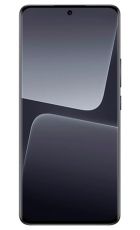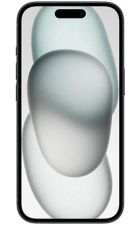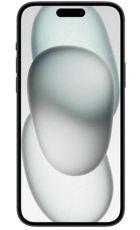Samsung has just announced its new flagship phone, the Samsung Galaxy S8, which will hit shops on April 21. It looks set to be one of the biggest smartphone releases of 2017.
The Samsung Galaxy S8 has a massive dual task on its hand. It has to improve upon one of the biggest hardware successes of 2016 whilst simultaneously making up for one of the biggest hardware failures.
Last year was a topsy turvy year for the South Korean manufacturer, with initial rave reviews of the Samsung Galaxy S7 and Samsung Galaxy S7 Edge turning to humiliation over the Samsung Galaxy Note 7. Samsung was forced to withdraw the latter premium phablet due to numerous reports of exploding batteries.
Fortunately, Samsung looks to be well on target to restore its imperious reputation as the king of Android with its latest phone. Here are five great new features of the Galaxy S8.
Almost bezel-free design
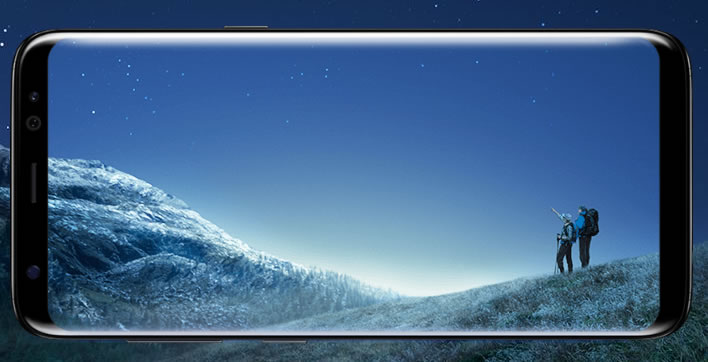
Samsung has made some bold design decisions with the Galaxy S8. This is the first phone in the line to ditch the iconic front-mounted physical home button.
It’s still there in a sense, but it exists as a floating virtual button that isn’t always visible. Like the iPhone 7’s ‘Taptic’ home button, Samsung has placed a haptic feedback motor underneath this touch-sensitive area to mimic the feel of clicking a button.
It’s all part of Samsung’s effort to make an almost bezel-free phone. Together with the curved-edge display taken from the company’s Edge line (there’s no longer a ‘flat’ option), there are effectively just two thin strips on the top and bottom of the phone that aren’t part of the display.
Samsung’s new large-screened phones come in a choice of five colours: black, grey, silver, gold and blue
Large Infinity Displays
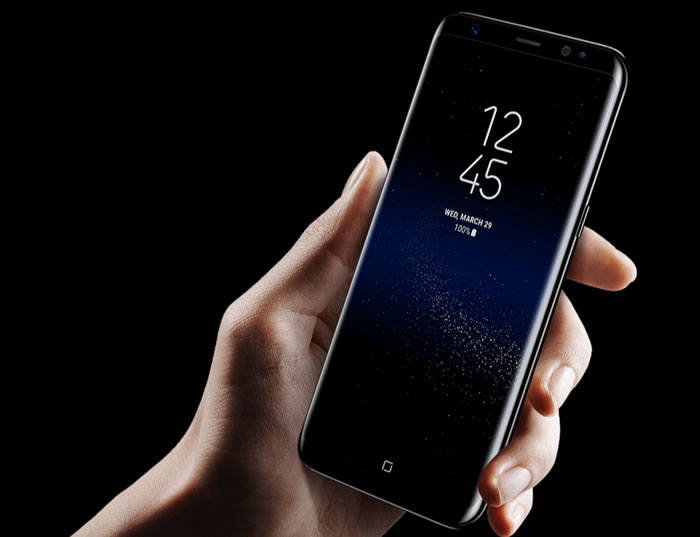
Samsung is calling the aforementioned bezel-free screen an ‘Infinity Display,’ for obvious reasons. However, the company hasn’t dramatically reduced the size of its phones compared to the Samsung Galaxy S7 Edge.
Rather, it has used the extra space to increase the size of the Galaxy S8 display. Or rather, displays. You get a choice of a 5.8-inch screen or the 6.2-inch screen of the Samsung Galaxy S8 Plus.
This means that even the smallest Galaxy S8 is bigger than both the 5.5-inch Samsung Galaxy S7 Edge and the ill-fated 5.7-inch Samsung Galaxy Note 7.
These Infinity Displays aren’t just bigger - they’re also proportionally longer. While most smartphones adopt the 16:9 aspect ratio preferred by TV manufacturers, the Galaxy S8 goes with an unorthodox 18.5:9.
Samsung will use this stretched-out screen to provide more on-screen information and app functions without the need for excessive scrolling.
The Galaxy S8 is also be the first phone to get a Mobile HDR Premium rating, which means it will support the greater range of colour gradients now offered by Amazon Prime and Netflix - among others. HDR is widely held to be the next big thing in TV technology, and Samsung has brought it to its phones at around the same time as LG and Sony.
Bixby intelligent interface
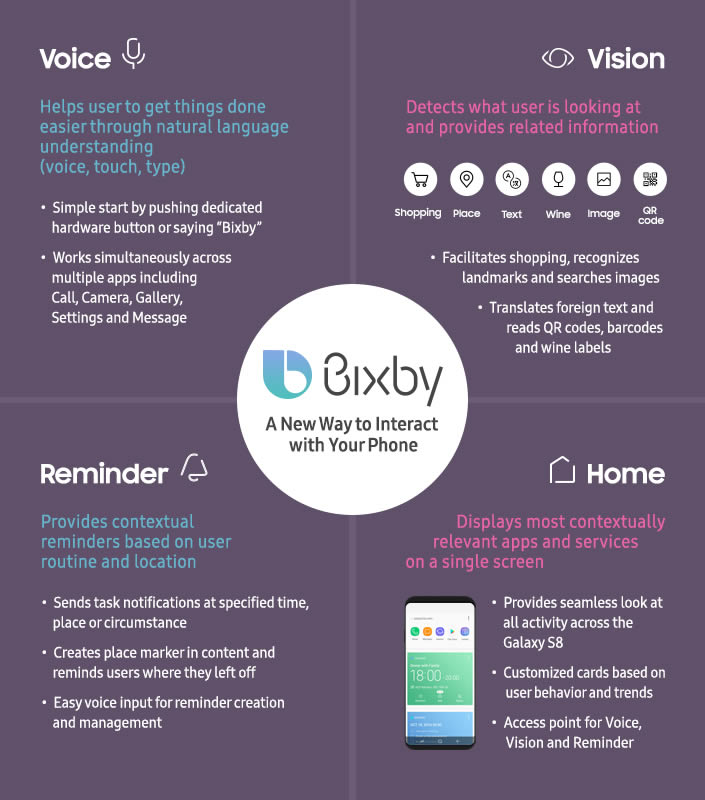
Samsung is launching an all new ‘intelligent interface’ with the Galaxy S8 called Bixby. This is essentially the company’s latest response to Google Assistant, Amazon Alexa, and Apple’s Siri.
Bixby accepts voice, text, and even camera inputs according to the context of your request. Using the camera provides some of the most interesting functionality, as Bixby will identify whatever you’re pointing it at and show you related web searches. It will also provide shopping links if it’s a purchasable item, while Bixby will also recognises buildings and show you nearby places to eat.
As if to drive home Samsung’s dedication to Bixby, the Galaxy S8 itself has a dedicated button for it on the left hand edge. A short-press of the button takes you to Bixby Home, which provides a card-based interface with contextually sensitive operations. A long press of the Bixby button cues up those Siri-like voice inputs.
Samsung intends Bixby to be able to do anything through vocal commands that you can do with traditional touch inputs, though it will likely be significantly more limited than that from the outset.
DeX desktop function
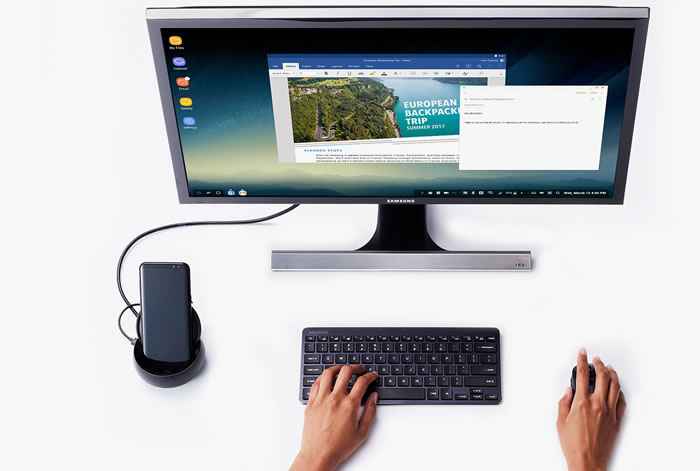
Samsung is attempting a similar concept to Windows 10 Continuum with the Galaxy S8 in a system it calls DeX. With the purchase of an optional dock peripheral, you’ll be able to hook your phone up to an external monitor, mouse and keyboard and essentially turn it into a basic PC.
The emphasis here is on basic. You’ll have access to expanded versions of your Android apps within a rudimentary homescreen environment, with support for multiple layered windows. Optimised Android apps will permit you to use keyboard shortcuts and to drag and drop files just as you would on your computer.
Samsung says that it is working with Microsoft and Adobe to optimise more apps for DeX functionality, and at the Unpacked launch event we saw how this might play out with the demonstration of a presentation edit in Microsoft PowerPoint.
An alternative approach to personal audio
Samsung appears to have drawn a line in the sand on personal audio - and it’s on the opposite side of that line to its great rival Apple.
The Samsung Galaxy S8 does not follow the iPhone 7 in dropping the traditional 3.5mm headphone jack. If Samsung sees a wireless future for headphones, like Apple, then it doesn’t believe we’re ready for that future just yet.
As if to drive that point home, it is offering a free set of high-quality wired Harmon AKG earphones worth $100 with every Galaxy S8.
Given that the standard of bundled smartphone earphones tends to be mediocre at best, this is a significant gesture on Samsung’s part. It will doubtless win the approval of audiophiles and those who felt burned by Apple’s somewhat user-hostile decision to ditch the classic headphone jack.








